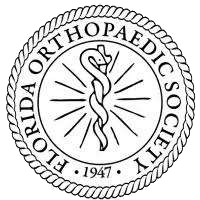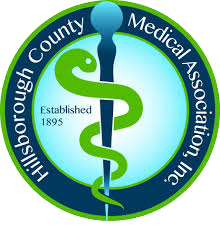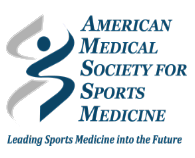Orthopedic surgery can be life-changing, giving patients relief from pain and restoring movement. Whether it’s a hip replacement, knee repair, or another procedure, recovery takes time and patience. During this period, one of the greatest challenges patients face is the risk of falling.
Falls can happen unexpectedly, and for someone healing from surgery, even a small slip can cause major setbacks. A fall after surgery may lead to broken bones, damage to the surgical site, or delays in the healing process. For older adults especially, falls can also impact confidence, making it harder to stay active and independent.
That’s why fall prevention after orthopedic surgery is so important. The steps you take during recovery—both at home and with your care team—can make a big difference in reducing risks. Fall prevention therapy, balance training after surgery, and small adjustments around the house all play a role in protecting your health.
Tips for Fall Prevention After Orthopedic Surgery
As you recover from surgery, healing is only part of the equation. It’s also important to stay safe as you regain strength and mobility. The following orthopedic recovery tips focus on reducing fall risk after surgery through practical steps, balance training after surgery, and fall prevention therapy. By following these guidelines, patients and families can create a safer environment and feel more confident throughout the healing process.
Create a Safe Home Environment
The home is where most recovery takes place, but it can also hold hidden hazards. Loose rugs, cluttered walkways, and uneven floors all increase the chance of tripping. Start by clearing pathways, especially in areas where you walk often, like hallways, the kitchen, and the bathroom. Remove throw rugs or secure them with non-slip backing. Keep cords and wires tucked away against the wall. Adequate lighting is also important. Add nightlights in bedrooms and bathrooms so it’s easier to move safely at night. These small changes reduce the fall risk after surgery and give you more confidence when moving around the house.
Use Assistive Devices
Many patients are hesitant to use walkers, crutches, or canes, thinking it’s a sign of weakness. In reality, these tools are essential for recovery. Assistive devices provide stability and support when your body is still regaining strength. Using the right device not only prevents falls but also protects the healing joint or bone from unnecessary strain. Ask your surgeon or physical therapist which device is best suited for your stage of recovery. As healing progresses, your therapist will guide you in transitioning away from these aids safely.
Follow Fall Prevention Therapy
Working with a physical therapist, or PT, is one of the most effective ways to reduce fall risk after surgery. Fall prevention therapy focuses on building strength, coordination, and awareness of your body’s movement. A PT will teach you how to move safely, practice exercises that improve balance, and show you how to use your body correctly when standing, sitting, or climbing stairs. This structured support helps you rebuild independence while lowering the chance of setbacks during recovery.
Focus on Balance Training After Surgery
Surgery can leave your muscles weaker and your sense of balance unsteady. Balance training after surgery is a key part of recovery. Your therapist may guide you through simple exercises like standing on one foot, heel-to-toe walking, or gentle movements that challenge coordination in a safe way. Over time, these exercises retrain your body to respond quickly if you begin to stumble. Improved balance not only prevents falls but also restores confidence, allowing you to move around without constant worry.
Wear Proper Footwear
What you wear on your feet makes a big difference in recovery. Slippers without support, socks on hardwood floors, or shoes with smooth soles can all increase your fall risk after surgery. Choose footwear with non-slip soles, firm support, and closed backs that stay securely on your feet. Even when moving around indoors, wearing the right shoes gives you better traction and stability, making slips and trips less likely.
Keep Essential Items Within Reach
Bending, stretching, or climbing during recovery can be risky. To lower fall risk, keep the items you use most often in easy-to-reach places. Place household essentials on countertops or lower shelves. Keep a small basket or bag near your chair or bed for items like your phone, glasses, or medications. This prevents unnecessary movement that might cause you to lose balance or strain your healing body.
Install Supportive Features
Simple home modifications can greatly reduce fall risk after surgery. Install grab bars near the toilet and in the shower to provide extra stability. Use a shower chair if standing for long periods is tiring. Check that stair railings are sturdy and secure, as they are often needed for support. Even adding non-slip mats in the bathroom and kitchen can make a big difference. These changes provide peace of mind not only for patients but also for family members who want to support safe recovery.
Move Slowly and Carefully
One of the most overlooked orthopedic recovery tips is simply to slow down. After surgery, the body needs time to adjust to new movements. Standing up too quickly, rushing across a room, or twisting suddenly can all cause loss of balance. Take your time when changing positions, and pause to steady yourself before walking. Moving carefully gives your body time to adjust and prevents unnecessary strain on healing joints or bones.
Full Recovery Is Possible After Orthopedic Surgery
Recovering from orthopedic surgery is about more than just healing the surgical site—it’s about rebuilding strength, confidence, and independence. Falls can put all of that progress at risk, which is why fall prevention after orthopedic surgery is so important. By combining simple home adjustments with professional support such as fall prevention therapy and balance training after surgery, patients can move forward more safely.
These orthopedic recovery tips not only protect physical health but also provide reassurance for families and caregivers. With thoughtful preparation and consistent care, it’s possible to reduce fall risk after surgery and support a smoother path toward full recovery.
Are you preparing for orthopedic surgery and interested in consulting with a surgeon? Call (813) 253-2406 or click here to schedule a consultation, so you can discuss treatment options and find out whether you’re a candidate for orthopedic surgery. Tampa Orthopaedic & Sports Medicine is located in Tampa, FL, and proudly serves patients from the surrounding communities.












